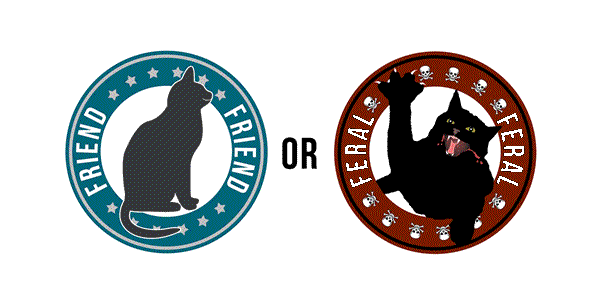Is the tide turning in the battle against introduced predators? Over the weekend we heard that tieke (saddleback) are nesting outside the fenced sanctuary of Zealandia. This is a landmark moment for conservation in New Zealand, but also reinforces the point that nobody wants to talk about – it is time to manage wandering cats. The fact is that when cats wander we currently have no way of telling whether they are our domestic lap dwellers or feral killers. It is time we started asking – Friend or Feral?
Why is this event so special?
As Conservation Week looms (1-9 November) Wellingtonians have had an early surprise present. This is the first time in a 100 years that tieke have nested on the mainland outside of the safety of a predator exclusion fence. Most of you have probably never seen or heard a tieke, and that is because they are pretty darn rare. Technically, they are ‘near threatened’.
This really is a sign that Wellingtonians are getting on top of their predator problem. Saddleback normally struggle with rats and can only survive when their numbers are suppressed by trapping or poison. Like many of our native birds they are cavity nesters, so they make nests in places like rotten tree trunks. This is to protect them from their traditional enemy of the weka, but does little to ward off rats and stoats. To make matters worse, introduced predators have a far keener sense of smell. This gives them an advantage over birds at night when it is hard to see.
Getting possums, stoats and rats in particular down to the levels where saddleback can breed is a testament to the hard work of all involved. Wellington City Council and Greater Wellington control predators across the wider area, and in this particular instance they have been aided by the sweat of volunteers in the Polhill Restoration Project. These volunteers spend hours of their spare time walking the steep tracks and checking traps in the reserve. Together they have laid the foundation for this event to occur, and now they have undertaken to step up their work and put a ‘ring of steel’ around the saddleback nest. Rats, stoats and possums (hopefully) don’t stand a chance.
But what about the cats?
Despite all this work, sadly we are doing nothing about the greatest predator that remains in the Polhill Gully and elsewhere in Wellington: the cat. Our resistance to managing wandering cats means that they are the last and greatest unmanaged predator loose in the area.
Don’t believe us? We can prove it.
For two weeks we put two motion-activated cameras in the Polhill reserve, close to the Zealandia fenceline and where the saddleback are now nesting. It was a mini-experiment, but the results were very interesting. Over two weeks our cameras picked up 9 separate visits from cats and 5 from dogs. Over that time the cameras photographed no rats, possums or stoats. This confirms the great work that is being done to suppress these other predators, and also confirms that wandering cats are the biggest remaining threat to the wildlife spilling out of Zealandia. Yes, even in the bush.
In this study we found that any given spot within the reserve was visited by a cat about once every three days. That is less than we picked up during our backyard study – remember we found the average Wellington back yard was visited twice every day by cats. But the point remains – wandering cats are far and away the greatest threat to the wildlife spilling over from Zealandia and into the city surrounding it.
A few dogs were also photographed, which isn’t surprising given that Polhill Reserve is a popular spot for owners to walk their dogs. Hence the need for dog owners to heed the advice of the Council and keep their dogs on a lead. However, the crucial point to remember is that cats and dogs are treated differently by the law. Dog owners must be responsible for their dogs at all times – a dog found wandering alone will be impounded and the owner fined. There is no such requirement for cats.
What can we do about it?
The main problem we face in managing cats is that it is impossible to tell if a wandering cat is owned or unowned; friend or feral. If a dog is found wandering, it will either be returned to its owner, rehomed or humanely euthanised. The latter option rarely happens because most people care for their pet dogs. Why don’t we value cats in the same way?
There is a need to humanely live cage trap cats in the Polhill reserve to help protect the tieke nesting there. If we microchipped and registered cats then when one is found wandering, it could be returned to its owner. Owners could be educated about how far their cats are wandering and the best times to keep them inside. Unowned (unidentified) cats could be rehomed or humanely euthanised – as we do with dogs.
We have an urgent need to manage cats in sensitive wildlife areas – such as the surrounds of Zealandia. But before we can do this we first need communities to recognise that people living in these areas should microchip and register their cats. Once this is accepted practice, the Council would be able to step up and manage cats without fear of the backlash that comes with accidentally euthanising someone’s beloved moggie.
In coming months we will be pushing for owned cats to be microchipped and registered, particularly in sensitive wildlife areas. If you would like to be kept informed about microchipping in your area, sign up here.
Click here to see many other reasons why we need to manage cats like dogs.
[hr]Over the coming 12 months councils will be raising the issue of microchipping and registering cats. If you want to get updates about when this happens near you fill out the form below.

